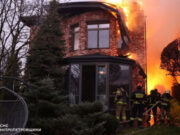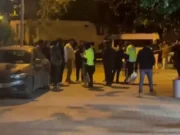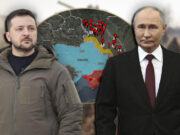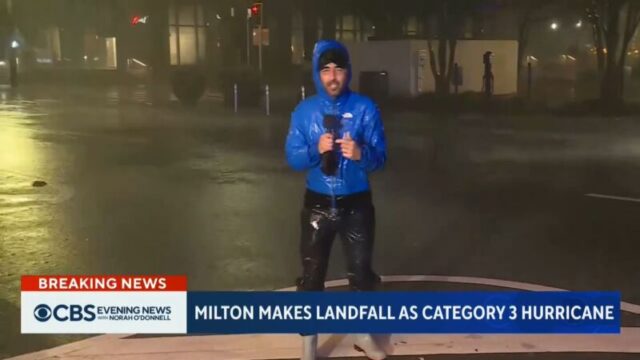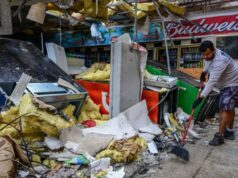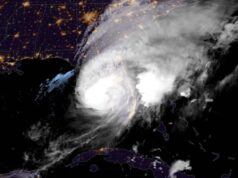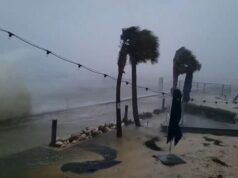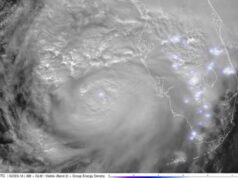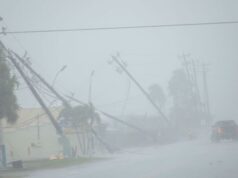Hurricane Milton has officially made landfall near Siesta Key, Florida, according to the US National Hurricane Center.
“Extremely dangerous category three Hurricane Milton makes landfall,” the agency’s update reads.
@tetovanews
Recap of what we just heard from DeSantis
We’ve just been hearing from Florida Governor Ron DeSantis, who was giving an update on the imminent arrival of Hurricane Milton in his state.
Here’s what he said:
Hurricane Milton is “in the process” of making landfall in Sarasota County, DeSantis told the briefing, with the US National Hurricane Center saying shortly afterwards that it was “close”
Milton has weakened to a category three hurricane, with maximum sustained wind speeds of 120mph (193km/h), but is still life threatening – with DeSantis saying storm surges of up to 15ft high are possible
He told residents “the storm is here”, and warned people to stay indoors and “hunker down” – only leaving when an official has said it’s safe to do so
So far there have been no reported fatalities, DeSantis added, but there have been “some injuries”
At least 125 homes have been destroyed and roughly 392,000 are without power, we were told, before a Florida Disaster Emergency Management official gave safety tips and told residents that even if things seemed quiet, they could still be in the eye of the storm and so to stay indoors
Six key things to know about Hurricane Miltonpublished at 00:27 British Summer Time 10 October
- Milton, currently a category three storm with maximum sustained winds of 120mph (205km/h), is expected to make landfall in the next few hours near Tampa Bay – an area of roughly three million residents
- Although it’s been downgraded from a category four, the second highest danger level, forecasters and officials agree that it remains a deadly threat
- President Biden has warned people living in the storm’s path to evacuate: “Sometimes moving just a few miles can be the difference between life and death,” he said earlier in a White House statement
- Millions of southern Florida residents are under mandatory orders to evacuate, though an unknown number have chosen to remain behind
- Storm surges have already begun to bring high water to coastal communities, and several tornados have been sparked, with more than 285,000 customers having already lost electricity in Florida, according to Poweroutage.us
- There are concerns that debris from Hurricane Helene, which struck the same region less than two weeks ago, may become airborne due to high winds, creating added danger
Hurricane Milton has made landfall. Here’s what we know
Hurricane Milton made landfall near Siesta Key, Florida, as a Category 3 storm with 120 mph sustained winds and higher gusts, according to the National Hurricane Center.
Milton will continue to unleash life-threatening storm surge, flooding rainfall and destructive winds both near and well-removed from where its center came ashore.
What is happening right now:
More than a million people are without power. Outages are expected to climb as Milton continues to move across the state. The most significant outages are in Sarasota County.
A considerable flash flood warning has been issued for nearly 2 million people and includes Tampa, St. Petersburg and Clearwater. In Tampa, about 6 inches of rain have already fallen with up to eight more inches forecasted for the next few hours. Drains, sewers and canals are starting to overflow, pushing water into the streets, CNN’s Brian Todd reported.
A 100 mph wind gust was reported at a weather station in Egmont Channel at the mouth of Tampa Bay, the NHC said. At times, the wind is so fierce it shakes walls and windows.
There are “multiple fatalities” in St. Lucie County, on the state’s Atlantic coast, after a tornado outbreak hit the area, CNN affiliate WPTV reports.
Where the storm is heading next: Milton will retain its hurricane strength as it tracks across central Florida through Thursday morning. Cities like Lakeland, Kissimmee, Orlando and Cape Canaveral are all in the forecasted path.






